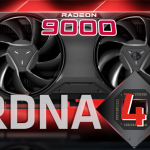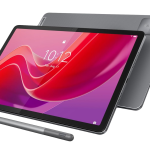
Today, we are taking a look at more Z690 motherboards, this time from ASRock as Intel has finally unleashed a sub-10nm (officially the Intel 7 process, which is comparable to TSMC 7nm) desktop CPU with its 12th Gen Alder Lake processors, and the company’s multi-year slippage at 14nm is officially over.
The Alder Lake architecture also features a plethora of innovative changes including a hybrid architecture with big.SMALL design features p and e-cores as well as a new hardware scheduling technology that will go live in Windows 11.
The company has largely been stagnant in the consumer desktop space. The main reason for this stagnation has been Intel’s reliance on its 14nm process node and Skylake architecture which has served the desktop space since 2015 up till 2020 (10th Generation Comet Lake) while Intel’s 10nm process dilemmas and yields couldn’t keep up with Skylake in mainstream desktop space. To build up its 10nm inventory for a mass consumer launch, Intel did release an intermediate platform, the Z590, and the respective 11th Gen Rocket Lake lineup with a new architecture but limited to just 8 cores due to power scaling and inefficiency on the 14nm process node.
One of the issues and an ongoing one is the competitive threat from AMD’s Ryzen processors which aren’t only tackling Intel in terms of pure core count but also in terms of IPC which has exceeded Skylake levels and also pricing in which AMD has simply made Intel’s once iconic Core i5 and Core i7 lineups disappear from the game. Despite the newer architecture, the Rocket Lake CPUs proved not to be competitive in the multi-threaded space and Ryzen 5000 CPUs even offered better gaming performance in several AAA titles.
There’s another key department where Intel still holds the lead over AMD which is due to the process maturation of the 14nm node over the years. In terms of clock speeds, Intel has taken the battle to AMD which makes sense in a way since while their remerged rival can beat them in terms of price, cores, they can surely flex their muscles in terms of clock speeds, however, AMD has been knocking the socks off Intel with its impressive gen-over-gen IPC gains which invalidate the clock speed gains that intel has been so proud of. Those clock speeds also come at a big disadvantage on the existing 14nm node and that’s power consumption. Intel Desktop CPUs are no longer the king in terms of efficiency.
Intel 12th Gen vs AMD Ryzen 5000 Desktop CPU Prices:
| Intel CPU | Cores / Threads | Clocks (Max) | Price (MSRP) | Prices (Newegg) – 01/11/2021 | Prices (Newegg) – 01/11/2021 | Price (MSRP) | Clocks (Max) | Cores / Threads | AMD CPU |
|---|---|---|---|---|---|---|---|---|---|
| N/A | N/A | N/A | N/A | N/A | $749.99 US | $799 US | 4.7 GHz (105W) | 16/32 | AMD Ryzen 9 5950X |
| Intel Core i9-12900K | 16/24 | 5.2 GHz (241W) | $589 US (K) $564 US (KF) |
$649.99 K $629.99 KF |
$559.99 US | $549 US | 4.6 GHz (105W) | 12/24 | AMD Ryzen 9 5900X |
| Intel Core i7-12700K | 12/20 | 5.0 GHz (190W) | $409 US (K) $384 US (F) |
$449.99 K $419.99 KF |
$394.99 US | $449 US | 4.7 GHz (105W) | 8/16 | AMD Ryzen 7 5800X |
| Intel Core i5-12600K | 10/16 | 4.9 GHz (150W) | $289 US (K) $264 US (KF) |
$319.99 K $299.99 KF |
$309.99 US | $299 US | 4.6 GHz (65W) | 6/12 | AMD Ryzen 5 5600X |
So this year, Intel has decided to launch a second architecture overhaul, and oh boy! It’s a big one. Enter Alder Lake, a brand new approach to x86 consumer processors which feature two key cores technology and come with a brand new platform that is outfitted with the next-generation features such as DDR5 and PCIe 5.0. The Intel 12th Gen Alder Lake lineup will include the top to bottom i9, i7, i5, and i3 chips.
Main features of Intel’s Alder Lake Desktop CPUs include:
- Intel 7 Process Technology
- Performance hybrid architecture, combing P-Cores and E-Cores
- Intel Thread Director
- Core architecture featuring performance improvements
- Up To 19% IPC increase
- Up To 16 Cores (8 P-Cores + 8 E-Cores) and 24 threads
- Increased L2 cache and L3 shared Intel Smart Cache
- DDR5 Support (Up To 4800 MT/s)
- Processor PCIe 5.0 (up to 16 lanes)
- Chiplet PCIe 4.0 (up to 12 lanes)
- Integrated WiFi 16E Support
- Up To 8 DMI 4.0 lanes
- Core and memory overclocking enhancements
- Enhanced Intel UHD graphics driven by Xe architecture
Their main competitor is still the AMD Ryzen 5000 lineup based on the Zen 3 architecture that was introduced back in Q4 2020 and based on the Zen 3 core architecture. For this review, I’ll be putting the Core i9-12900K to test on two Z690 motherboards, the ASRock Z690 Taichi and ASRock Z690 PG Velocita.







